Marazion railway station and Pullman coaches, Cornwall
A scene of desolation and dereliction in Cornwall.
Report by urban75 editor, July 2005/Photos Mar 2003
Marazion is a town of great antiquity, being one of the oldest chartered towns in Cornwall.
One of the major towns in Cornwall in medieval times, Marazion was granted its first charter of incorporation by Henry III in 1257 and was reaffirmed on 13th June 1595 by Queen Elizabeth.
Its unusual name derives from the important fairs and markets that were held in the town, the earliest dating back to 1070.
The names of the two biggest markets - Marghas Byghan (Small Market) and Marghas Yow or Jew (Thursday Market) blurred over time to become 'Marazion'.
The presence of the Benedictine Monastery on St. Michael's Mount attracted pilgrims to Marazion, who hung about in the town until the causeway was revealed by the ebbing tide.
The main trunk road from London used to terminate in the town before splitting into minor roads leading on to Penzance and Helston.
The importance of the town was such that the packet post used to deliver to the town twice a week from 1660 onwards.
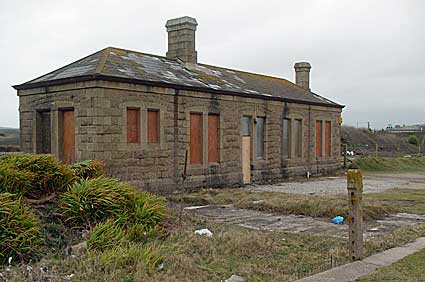
Once an important stop on the main London Paddington - Penzance route, Marazion railway station has been stripped of its platforms and awnings, and now stands alone in an ugly wasteland.
The passenger station was opened 11 March 1852 by the standard gauge West Cornwall Railway, which had reached west from Redruth.
Following the West Cornwall Act of 1865, the line was worked by GWR, SDR and BC&ER, with a third rail for Brunel's broad gauge being added 1 March 1867.
The line was absorbed into GWR on 1 January 1877.
The station was never particularly busy, although it dealt with a fair bit of agricultural traffic including broccoli and new potatoes.
The current station building dates from the 1880s.
The station was closed to passengers 5 Oct 1964, with freight services following on 6 Dec 1965.
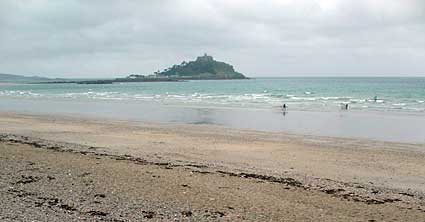
The old station looks out to the rocky island of St Michael's Mount, crowned by a medieval castle and church.
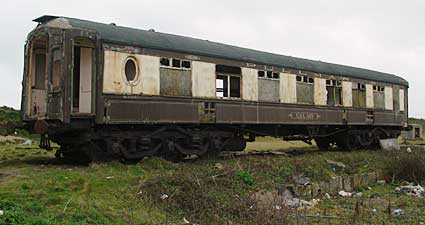
Standing forlornly on a strip of disconnected track near the disused Marazion station are the crumbling remains of three Pullman coaches.
Pictured here is 'Calais', once a luxury 12 wheel parlour car, built in 1921.

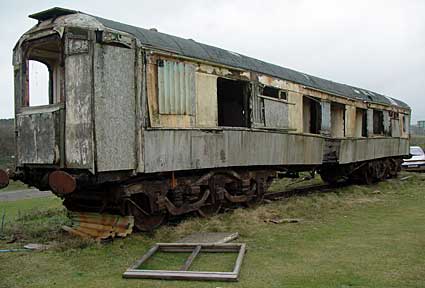
Once the pride of the fleet, many decommissioned Pullman coaches were converted into camping coaches in the 1960s.
Marazion originally hosted six coaches, but thankfully not all were left to disgracefully rot away in the sea air, like these desolate ruins seen in March 2003.
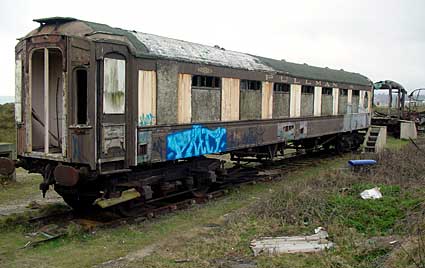
View of a derelict Pullman coach.
A second Pullman coach ('Juno', a 1923 brake parlour car) looks equally forlorn, while just beyond it can be seen the shell of the burned out 1923 coach, 'Aurora'.
It's hard to imagine that that the rich and famous would have once travelled in these coaches.

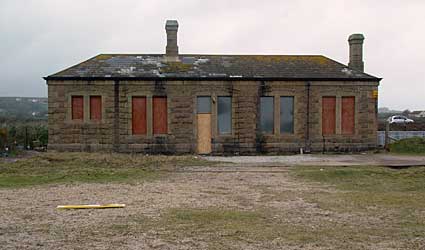
View of the boarded up GWR brick-built station building at Marazion.
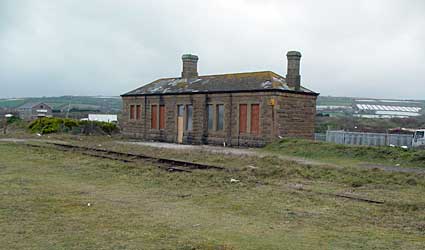
The main Penzance-London railway line stands behind the old station building, with a rusty strip of disconnected railway line running past the sea-facing side.
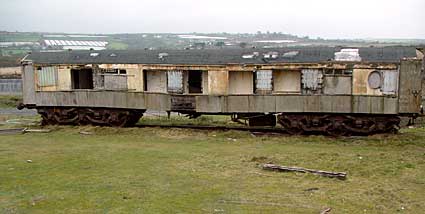
Sadly, these remaining coaches at Marazion were soon to disappear, with a posting on the Pullman Society's website in September 2003 reporting that the coaches had "vanished" and been replaced by an "an ominous pile of charred timber and a few odd wheel sets"
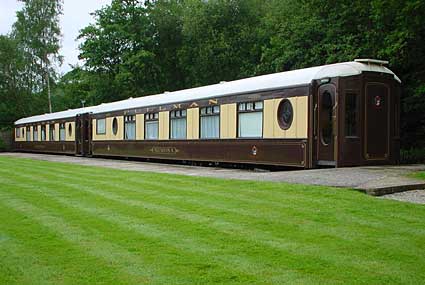
On a happier note, two of the coaches at Marazion were rescued in the late 1990s and have subsequently been fully restored to their former glory at Petworth railway station, where they now serve as luxury hotel rooms.
|

